Winter Fishing in New Zealand: A Coastal Adventure
While we are lucky enough we don't have to deal with snow or ice when we are fishing off the coast, a lot of the country decide to put away their boats and fishing gear for Winter. The reality though is this time of the year provides some of the best fishing on offer. Yes the days are shorter, the temperature has cooled right off and the fishing can be tougher in terms of numbers, but the increase in size and quality of some of our species increases significantly! It is advised to pick your weather windows carefully, while we do have some stunning days, they can turn very quickly so making sure you are in touch with varying weather forecasts and plan well, you can make the most of these cracking days.
Below is a bit of a dive down the rabbit hole of what you can expect to catch during winter as well as a few tips for making the most out your days on the water.
Safety
This is important at all times of the year. However, the risk does increase in winter due to the frequent changes in weather conditions plus it is a heck of a lot colder in, and out of the water!
Lifejackets: It goes without saying, but always wear a lifejacket. They are inexpensive and can literally be the difference between life or death if the unexpected happens. No-one goes out thinking they are going to be in the water from an overturned boat or slip off the rocks, but for the sake of $100 or less it is vital we wear them.
Tell someone where you are going: Give an exact location. Ideally with the Coastguard if you are on the boat, and an expected return time. Where possible, keep in touch with others on land, if the worst happens and people need to come looking for you at least they will know where to start!
Two forms of communication: Always carry two forms of communication, this could be a mobile device (make sure it is a Waterproof case!), PLB, EPIRB or a VHF radio. Additionally, it is recommended to carry some flares while you are out on the boat.
Regularly check weather forecasts: Weather forecasting is pretty good now, gone are the days of looking outside and if it looks good go. Study 2-3 different websites and collate that information to decide where you are going to fish and if there is any significant wind, swell or abnormalities forming. If in doubt, stay at home! There will always be another opportunity to get out on the water.
Proper Gear: Winter conditions can be chilly and wet, so wearing layered, waterproof clothing is essential. This means a thermal baselayer, t-shirt, fleece and a waterproof jacket over the top. As well as this, take a beanie, warm socks and suitable footwear. Remember, you can always take gear off if you get too hot, but if you have no additional clothing to put on if you get cold, this can lead to massive problems!
For more information on Gill Wet Weather gear check out our article: A Guide to Wet Weather Clothing
Common Saltwater Species and Tips to Catch Them
We are very lucky to have an eco-system like ours, it supports a varying range of fish species, many of which are available to catch for most anglers during the winter months.
Snapper:
The most commonly targeted fish in New Zealand. Known for their table quality and great fight, these can be at their biggest during winter and a lot of anglers have caught their personal best during this time.
Stray lining off the boat or rocks in the shallows is one of the preferred methods as the bigger fish are in close where there is a plentiful food source. You can catch these fish in extremely shallow water so remember to use heavier traces, particularly if you are fishing over very foul, rocky areas. We recommend 60-80lb. You should also increase your hook sizes during this time, we often use 8/0-10/0 in both recurve/circle and beak style. If you are leaving the rod in the rod holder, we suggest using circle/recurve style hooks. This will increase the rate at which fish are caught in the mouth or lips, making it easier to release the bigger ones. For more information on the intricacies of stray lining, we recommend having a read of our article:
If you are softbaiting, wash fishing is particularly good this time of the year, due to snapper being more lethargic during winter they can be a bit lure shy, so having a mix of smaller 4’’ baits as well as some 7-9’’ baits is recommended. Also, as you will be fishing shallow, use the lightest jig head possible, 1/4oz is great, however you can even fish unweighted wormhooks to really slow the descent of your softbaits.
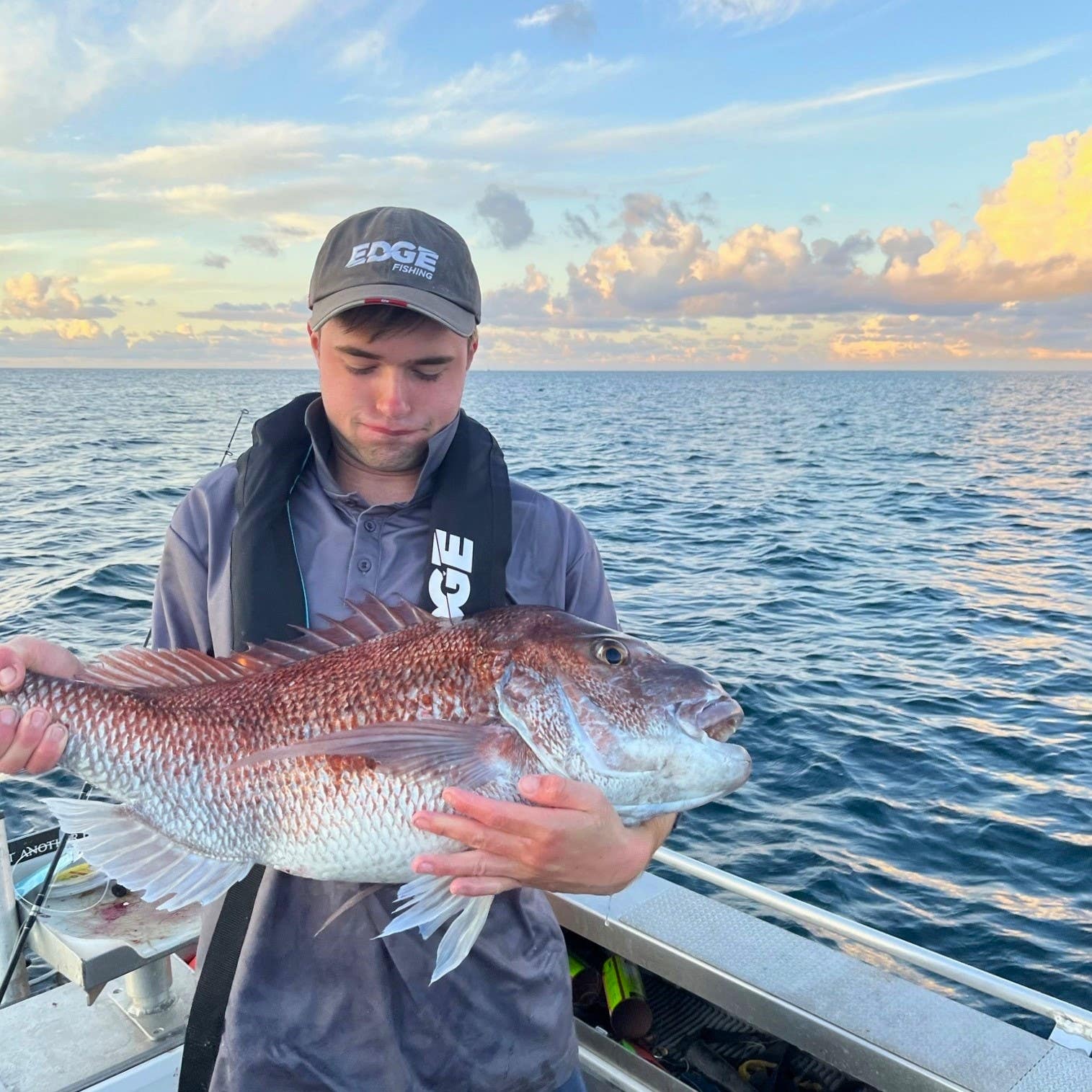

Kingfish:
They can be a tricky fish to target at any time of the year. Inshore, their numbers will decrease as they push out to more of the offshore reefs, but it is definitely worth a good crack in winter. They are usually bigger due to them feeding up over summer and autumn and putting on a lot of condition. While you can catch kingys with jigs in winter, it will be harder with a lot more time and energy spent. When you do finally get on a pack of fish that are hitting the jigs, quite often these will be ‘rats’.
If you are wanting larger fish, then live baiting is the preferred method. Livebaiting also allows you to actively fish and hold your bait at an exact depth while giving them an easier target. When fishing these deeper reefs, if fishing braid, using an FG or PR knot to tie on 2m of 100-150lb leader. Next, put an 8oz ball sinker on this trace and then tie a heavy-duty swivel on. For your bite leader, use 1-1.5m of 100-150lb trace with a specific live bait hook attached at one end, then tie the other end to the HD swivel. This rig allows the bait to swim freely while still allowing you to be in control of the depth that you want it to be at.
When fishing shallower reefs (sub 40m) and land-based, try throwing out some stick baits or poppers. This method of fishing is extremely visual and can actually be very productive during winter. Fish are generally a bit more lethargic so slowing down your sweeps and giving a good 1-2 second pause in each time can entice fish to eat your lure. We have found stick baits will work more than poppers in winter due to the action imparted on the lure itself, but if you are raising fish and they are not committing to your lure, a quick change to a popper might make the difference!


Wreckfish (Bluenose/Hapuka/Bass)
While these species can be caught year-round, it is common for these to be targeted during winter as they move onto the top of reefs to spawn. They are usually caught in 100-300m of water depending on the species and the most common way of targeting these incredible eating fish is with a dropper rig.
Common dropper rigs include 2 or 3 10/0-18/0 circle hooks made on heavy trace – (200-400lb) and with sinker weights ranging from 24-40 ounces. As there are a lot of smaller fish in these depths which pick at your baits, you want to make sure you are using tougher, larger baits to give your target species the time to get to your bait and eat it. Baits like squid, barracouta and blue mackerel are fantastic, as well as live baits such as jack mackerel and koheru. Often, the live baits will end up catching the biggest fish of the trip.
Tip: While a significant investment, you can utilise electric rod and reel combos to save the hassle of winding up from the depth’s multiple times per day. This is a great option for prospecting new spot.
Deep dropping rigs can be purchased pre-made so you don't need to spend any time rigging gear however, if you do decide you want to make your own, we have all the terminal tackle and rigging equipment in store. You can find out more information on deep dropping rigs, rods and reels and how to target these fish in our article on deep dropping here: The Art of Deep Dropping.
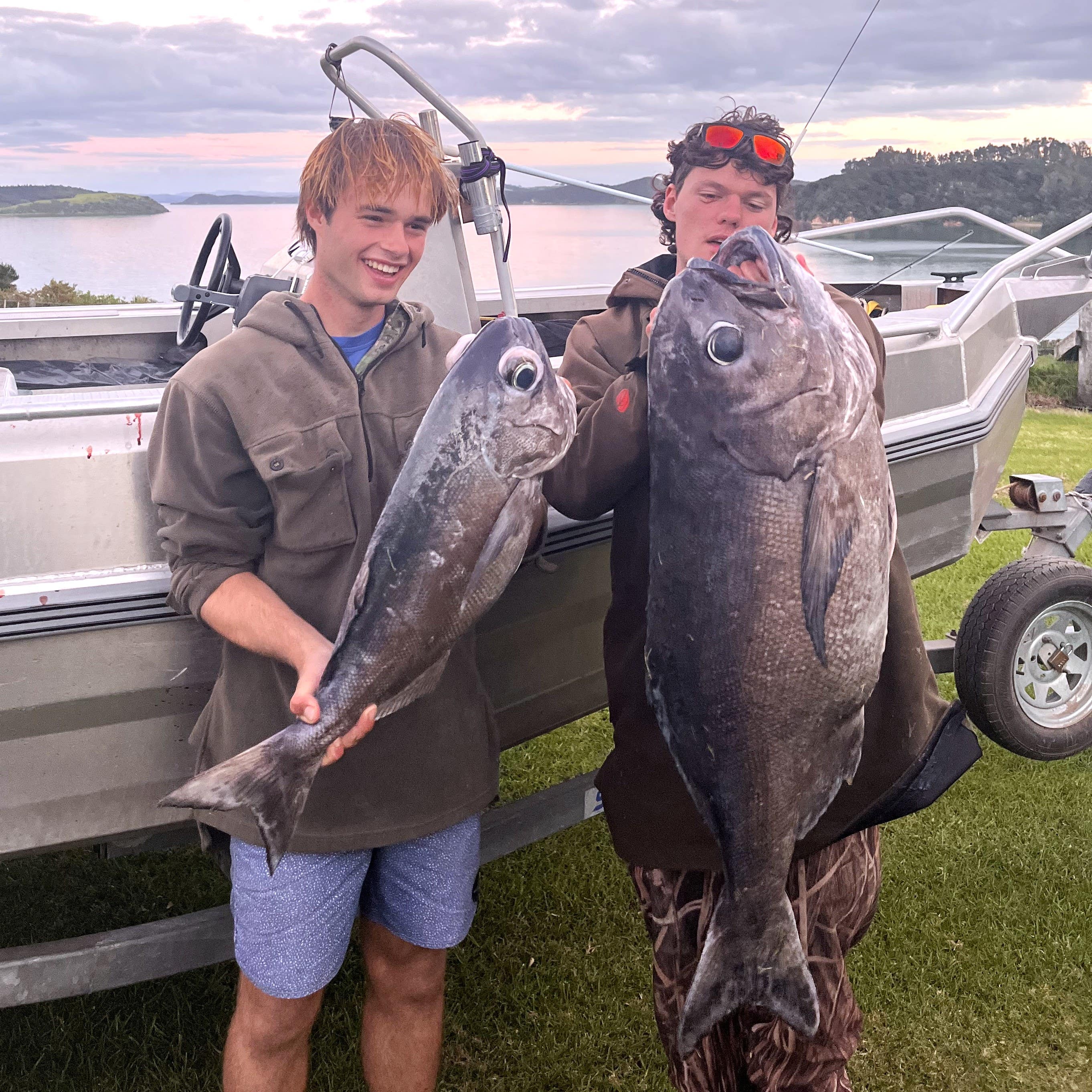

Kahawai:
Often referred to as "the people's fish", kahawai are known for their spirited fight and are a common catch in the winter months.
There are many ways to target kahawai - either with lures including spinners and softbaits, smaller micro style jigs, natural bait, or even live bait, the biggest thing is finding them. Look for birds on the surface (terns in particular), or schools of bait on your sounder which have been tightly packed together. Where there are terns, it generally means there are scraps of fish, krill or whitebait close to the surface. If you find these then you are almost certain to find kahawai lurking underneath. In this case we would recommend small spinners and small grub tail softbaits. These both give maximum action and will enable you to cast further into these schools of fish. The lighter line and rod combos you will be using mean you will have an enjoyable fight on your hands.
Alternatively, if you are anchored on a boat or fishing off the land, utilise a berley trail. Berley will almost certainly bring kahawai into the area which you can then target with small cubed unweighted baits. Keep an eye on your baits as they float down as often they will eat it just under the surface.
While kahawai might not be targeted purely for their eating quality, if looked after, they taste great! Upon catching, immediately iki them, ensure you bleed them properly, and put them straight into an ice slurry. By doing this, it will take a large percentage of the blood out of the flesh which you can then turn into sashimi and ceviche. Alternatively, they are awesome in fish curries, pan fried, as well as the common way of smoked.
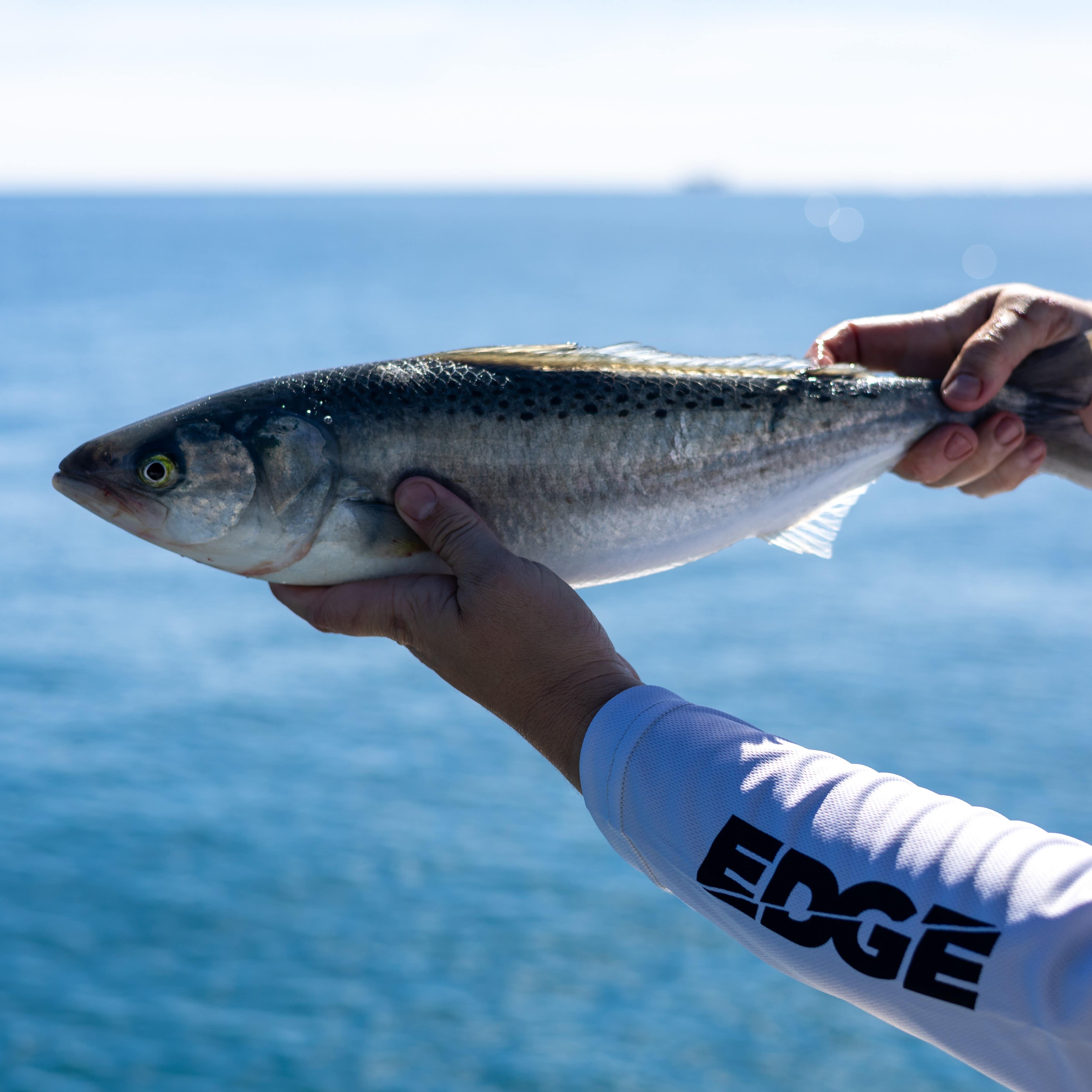

Blue Cod:
A staple of New Zealand's southern waters, blue cod are highly sought after for their firm, white flesh and are typically found in deeper, rocky areas.
There is an almost unlimited way to catch blue cod, the most common way is with flasher/dropper rigs. Utilise heavier sinkers if fishing in deeper water to ensure your line is as vertical as possible, this makes it easier to detect bites as well as reducing the possibility of tangles, which blue cod are notorious for doing!
If you prefer lure fishing, then using Edge Alien Jigs or Shimano Lucanus jigs are ideal. These fall through the water column effortlessly, while the weight of the lure ensures your line angle stays more vertical when drifting, plus the smaller hooks are razor sharp, meaning your catch rate will increase.
As a side note: Blue Cod fillets wrapped in bacon in the oven … life changing!
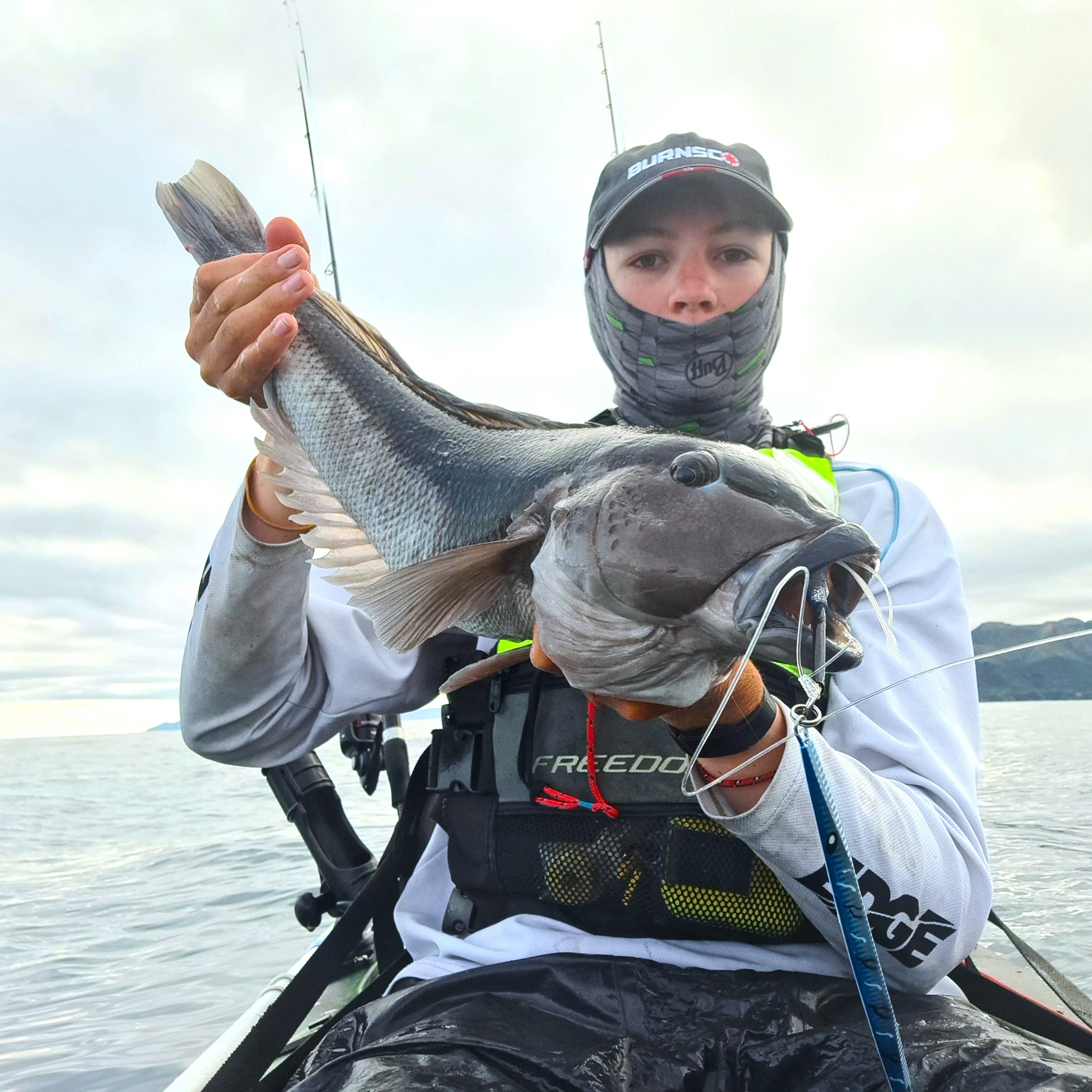

Gurnard:
Recognizable by their bright red colour and wing-like pectoral fins, gurnard is one of, if not the best, inshore table fish out there.
The predominant method for catching these is similar to that of blue cod. Gurnard live hard on the bottom and swim around, using there feelers to detect small bait fish and crustaceans, so it is important to have your bait or lure as close to the bottom as possible.
Dropper/Flasher rigs do just this, the sinker sits hard on the bottom while the hooks are less than a metre off it, allowing gurnard to swim up and take your bait.
Smaller softbaits (Gulp! Or Zman 4’’ grubs are perfect) dragged along the bottom also work well for gurnard, we prefer more natural colours in the winter like brown and dark green. Alternatively, lures like the Edge Alien jigs, Ocean Angler Sliders, and Shimano Lucanus work very well as you fish these slowly and very close to the bottom.
Tip: The orange colour is absolutely dynamite!
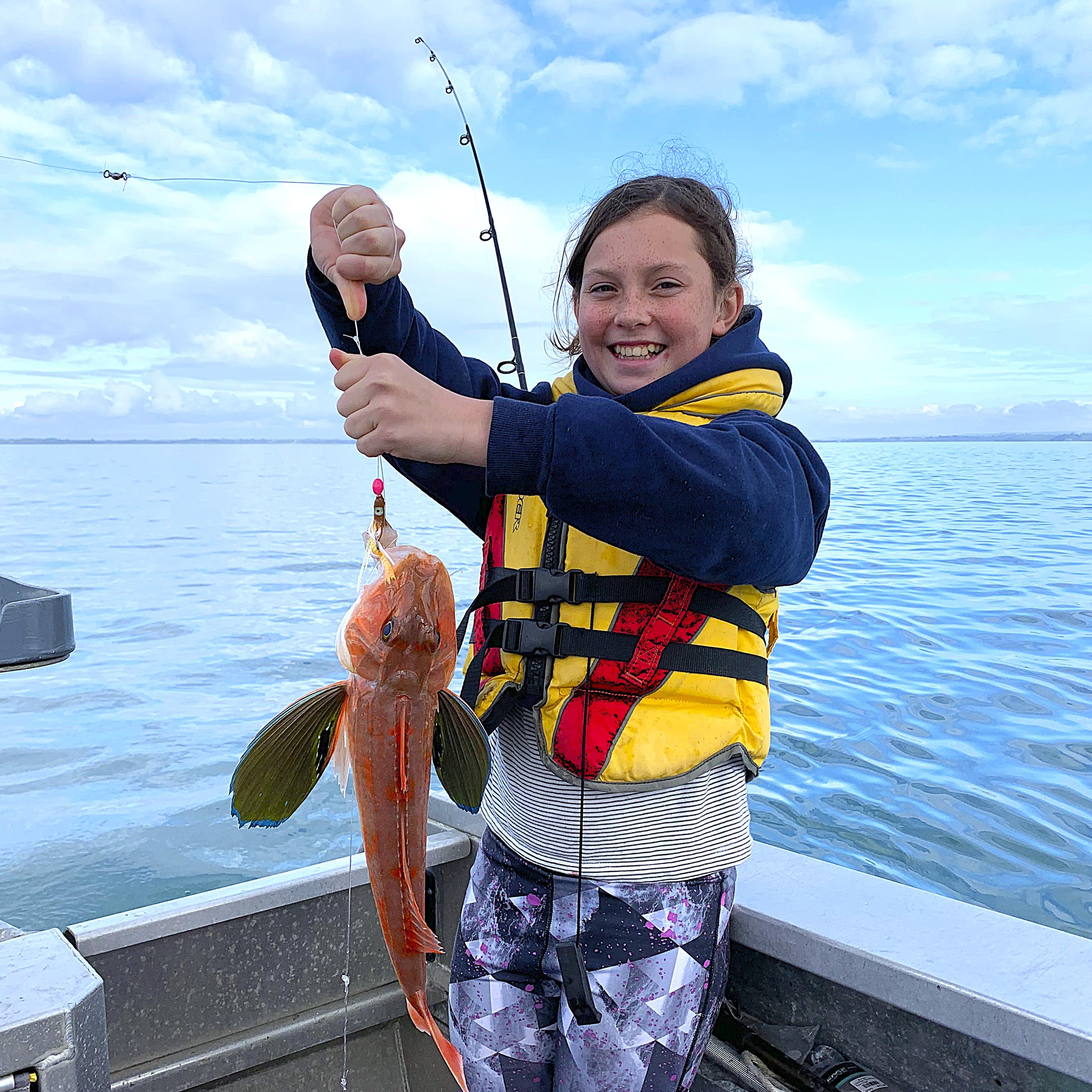

Southern Bluefin Tuna:
A relatively new species targeted by recreational anglers in both the North and South Island after some well-received information was given by the commercial fleet less than 10 years ago. It is a great opportunity for game fishing all year round, where in the past it was only thought of for the December – May months.
There are many ways to target SBT, but the most common way is with trolling lures. Like all tuna species, they can be a little boat shy, so by setting your lure spread further back (up to 50% further) than what you would when targeting marlin will significantly increase your chances.
“Match the hatch” - Tuna often feed on squid, saury and other smaller baitfish so utilising smaller lures to target these fish is recommended. Also, to fish more of the water column, try utilising some of the hard body type diving lures such as the Edge Bibbed Trolling Lure, Rapalas and the DTX Minnows from Nomad Design. By having variety in your lure spread enables you to cover more bases and increases your chances of getting a bite.
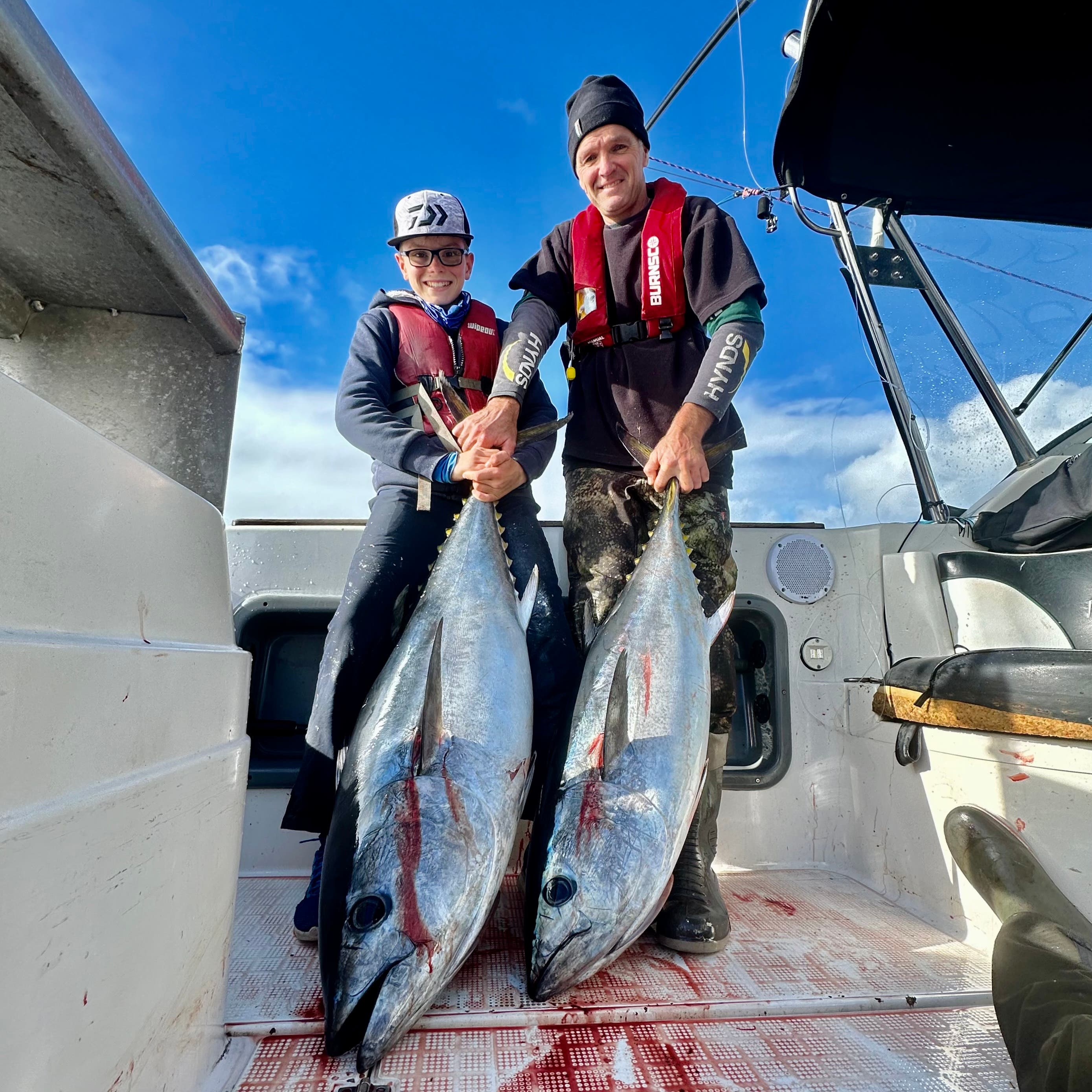

When you get a bite, keep driving for a bit longer. Often SBT are swimming in big schools so when you get the first bite, instead of clearing the gear straight away, relax and give it 30 seconds to 1 minute, quite often you will get a 2, 3 or even 4 way hook up!
Remember there are rules around the take of SBT, while their population has increased significantly over the last couple of years they are still listed worldwide as endangered. The current law in NZ for recreational anglers is 1 fish per person per day. There is a heck of a lot of meat on even a smaller school sized SBT, so consider only taking 1 or 2 for the boat and tagging and releasing any others or, changing tact entirely and fishing for something else.
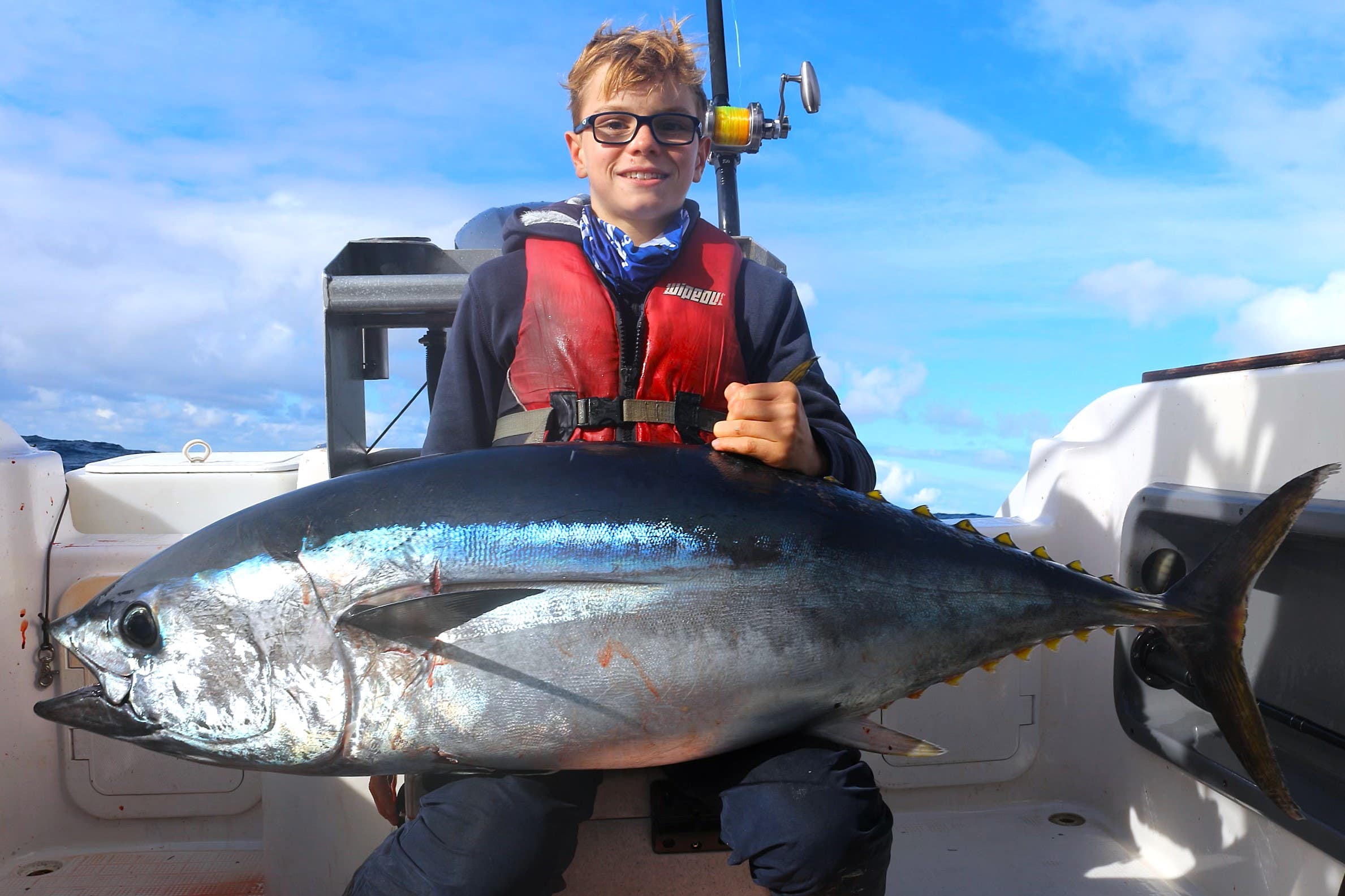

Conservation
New Zealand places a strong emphasis on marine conservation, and it's essential for anglers to respect local regulations and guidelines. Many coastal areas have specific rules regarding catch limits, protected species, and the use of certain fishing methods. Adhering to these rules helps preserve fish populations and ensures that future generations can enjoy the same great experiences. Practicing catch and release, using bigger hooks to reduce fish swallowing them, and avoiding overfishing are critical steps every angler should take to contribute to sustainable fishing practices.
Winter saltwater fishing in New Zealand offers a wide range of possibilities, whether you are fishing off the land or at sea. Whether you're a seasoned angler or a beginner looking to try something new, the scenery, and plentiful fishing opportunities make it an experience not to be missed. So, pack your gear, embrace winter, stay safe and enjoy everything this country has to offer!
Do you have any questions?
Please, contact our friendly team on 0800 102041
or email: website@burnsco.co.nz
We provide general information on products, not personal advice.
Always seek the help of a relevant tradesperson if you have a technical query.

